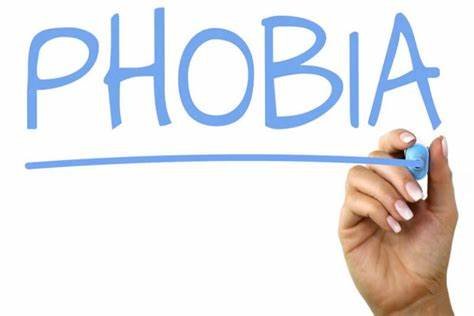There is an unspoken, covert, and arbitrary double standard for working in the mental health community as a peer. In this land, discrimination goes without question sometimes. The double standard exists in mental health agencies everywhere. The insidiousness of this double standard runs deeps.
As a professional in mental health, I have seen the depth of this discrimination at various levels and intersections of “agency.” From Human Resources (HR) to Operations, Clinical work to Peer-run departments, there is a misinformed set of expectations and beliefs involving peer work looming over the entire mental health “agency” setting.
The double standard exists because of a culture of mental health medicalization. The DSM-5 has codified the symptoms of mental illness for clinicians. However, all of these symptoms are subjective. If someone who has not disclosed a diagnosis reports having trouble sleeping, or feeling down that day, no one would think twice about it. But for peers, who are labeled with an illness, these same experiences become seen as “symptoms” and force the other agency members to question the peer’s competency.
Think about it. Peers, through the act of self-disclosure, reveal their lived experience at work in the agency all the time. Through the act of self-disclosure, these peers are revealing their lived experience to other peers, but also clinicians, psychiatrists, social workers who are very much bound up in a narrow-focused idea of good mental health.
For most clinicians, peer work not only continues to be misunderstood; it is viewed with the lens of the prescriber or therapist as work by people who are still disordered or sick. Despite the supposed egalitarian non-hierarchal landscape of interdisciplinary teams (e.g., ACT, or Assertive Community Treatment) in mental health, peers are certainly not understood as being as healthy as their fellow clinical counterparts in the mental health agency or when working on the same team.
I have worked in several mental health agencies and settings. Each experience was invariably similar, especially concerning the informal set of questions and comments circulating about the peers’ job performance and health. As far back as I can remember, the peers at my agency were under constant evaluation since they were hired.
Even more troubling, after working there for some time, the peer still seemed to be under continuous and informal assessment from colleagues without a disclosed diagnosis. For everyone else at the agency, the assumption was that they could do their jobs, that their health would not get in the way. But for us peers, the assumption was that our quality of work was always questionable, our health always on the verge of interfering with our jobs
While the level of “functioning” is now generally accepted as a dated clinical term, it has sadly found new meaning, traction, and use against the peer community. The peer’s work readiness and ability to perform at work given his or her preexisting mental health issues are always under question. Even worse, the lingering questions around health, in my own experience, have risen to more than just conversation around the water cooler. I have observed these questions rise to HR and even result in unfounded termination from employment.
In every agency I have worked for in New York state existed a secret conversation, an informal meeting, and ongoing dialogue about a particular peer’s mental health status when an incident or unexpected event occurred. For example, if a peer called out sick, or there was a new and unusual behavior in the peer’s day-to-day disposition, all of a sudden, that peer’s competency was under question.
I knew plenty of professionals (e.g., therapists, social workers, psychiatrists) that would talk about “fucked-up marriages” or “explosive” behaviors at private social functions or work. Somehow, someway, these professionals are not considered sick or in need of treatment. These behaviors are widespread. What is not so common is the license for peers to mimic this behavior.
Peers who want to feel comfortable in their shoes being themselves without fear of losing their jobs or respect from their colleagues cannot behave like this without fear of being called “sick.” The etiology of this discrimination runs deep. Therapists and psychologists without any lived experience are somehow above reproach. The same behaviors that are viewed as normal and understandable when exhibited by therapists and psychologists are considered symptoms of an illness when peers exhibit them.
This disparity was so visible and yet so brazenly discriminatory in the jobs I have held. I’ve suffered trauma from the entire experience of working as a peer with lived experience.
As a peer, my education, disposition, presentation, focus, and ability to do a job are under scrutiny. Given that we live in a world of stereotypes, discrimination, and labels, peers are always judged by other team members when working in mental health or interdisciplinary teams. We are considered not quite healed yet, or in need of further recovery to be successful or ready to use.
After openly disclosing my lived experience while working as a clinician, I heard colleagues’ comments, the smirks, the language thrown around the watercooler. These were comments about my ability and calculated as a general summary of perceived progress and recovery status from a diagnosis. My colleagues would talk about how recovered I was, or how healed I was from my illness. Even worse, my recovery was taken out of a more human context and discussed only in clinical language. I felt like a textbook example on the agency’s list of “recovered” peers.
My point is that peers’ worth and abilities seem to be summarized by their so-called functioning level. A peer’s ability is determined—by clinicians and their colleagues in the system—to be only as good as their ability to come across as healthy to their fellow team members. The standard is as absurd as it is arbitrary. Since there is no clinical determination or assessment of seeming healthy, the peer’s health status is bound up in a world illusion and discrimination.
The double standard requires peers to demonstrate their skills and talents to help people heal, be publicly comfortable with their problems, and work alongside social workers and others in the helping profession. In doing so, peers handle the same or even more severe issues but are deemed less able to compartmentalize problems and engage in self-care.
This is clear evidence of a double standard and attitude that favors and privileges one side of the binary—the clinicians—over peers. This discrimination must be made visible and revealed to mental health advocates and changemakers. Readers of this article must take this information and begin to explore this discrimination at various levels of the mental health sector, including advisory boards and other apparatuses above the agency’s level. Only in the larger arena, above the agency’s auspices, will we be able to put a stop to this double standard once and for all.
Max E. Guttman is the owner of Mindful Living LCSW, PLLC, a private mental health practice in Yonkers, New York.
- Max E. Guttmanhttps://mentalhealthaffairs.blog/author/max-e-guttman/
- Max E. Guttmanhttps://mentalhealthaffairs.blog/author/max-e-guttman/
- Max E. Guttmanhttps://mentalhealthaffairs.blog/author/max-e-guttman/
- Max E. Guttmanhttps://mentalhealthaffairs.blog/author/max-e-guttman/






